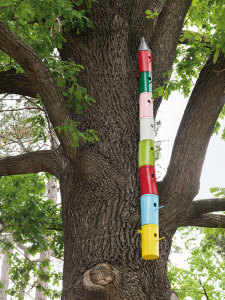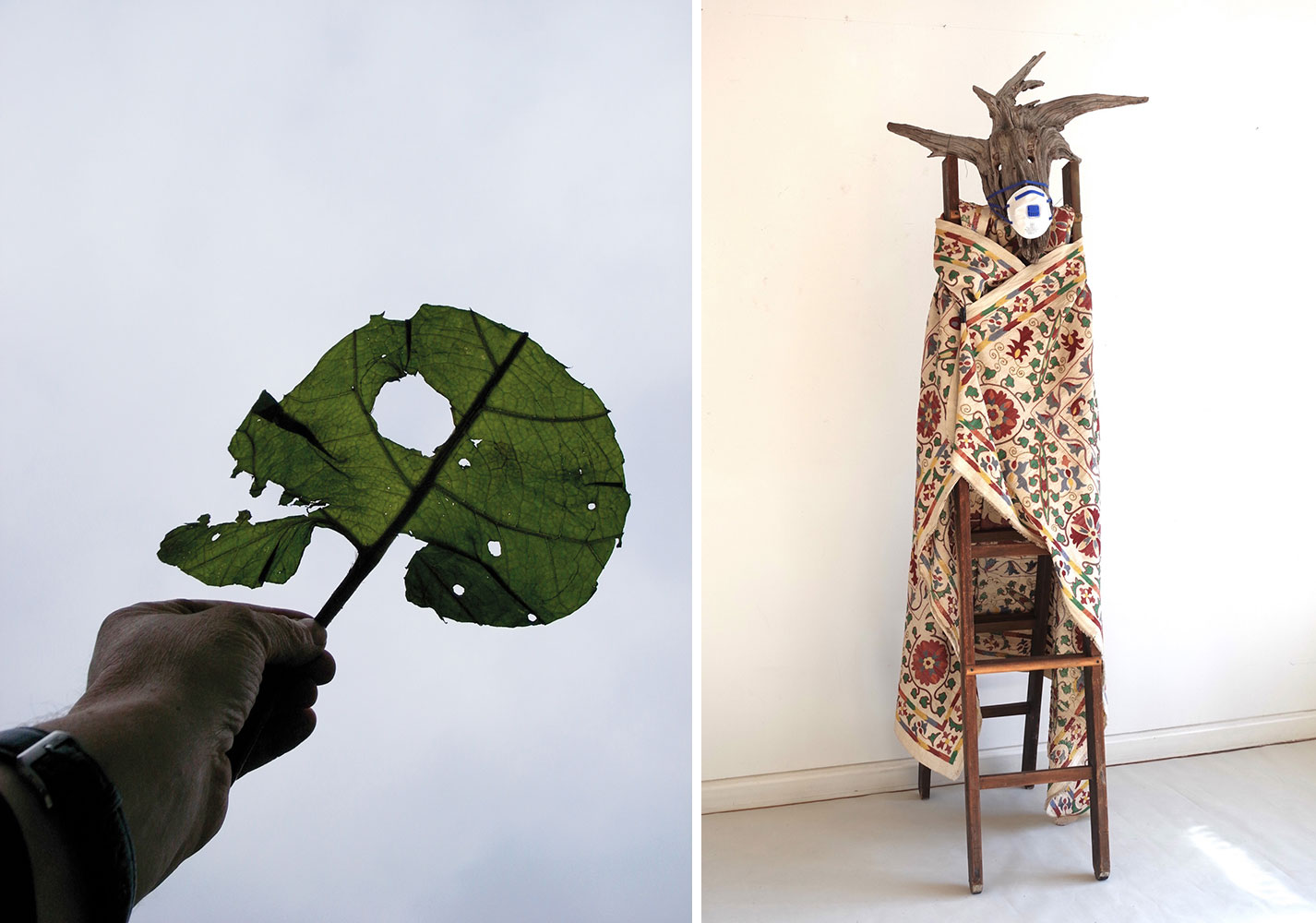PRESENTATION: Lois Weinberger-Basics
 Lois Weinberger has been hailed as a pioneer of a different, an artistic ecology. Describing his artistic practice as poetic field work, he emerged in the 1990s as a leading voice in the discourse around the relationship between nature and culture. He was an early and visionary critic of the dislocations of the Anthropocene (the era defined by humanity’s profound impact on Earth).
Lois Weinberger has been hailed as a pioneer of a different, an artistic ecology. Describing his artistic practice as poetic field work, he emerged in the 1990s as a leading voice in the discourse around the relationship between nature and culture. He was an early and visionary critic of the dislocations of the Anthropocene (the era defined by humanity’s profound impact on Earth).
By Dimitris Lempesis
Photo: Belvedere 21 Archive

In “Basics”, the Belvedere 21 presents the last exhibition for which Lois Weinberger compiled a selection of works and writings until shortly before his unexpected death in April 2020. Over one hundred works created between the 1970s and 2020, most of which have never been seen in Vienna. The “Green Man” a recurring figure in Christian ecclesiastical architecture, is a kind of leitmotif. The face from which leaves sprout melds human and plant in a hybrid creature. The archetype permits a range of interpretations: from the pagan imaginary of a forest deity, a representation of a symbiotic relationship between humans and nature, to the sylvan sprite, an embodiment of dark, untamed, and dangerous nature and antagonist of the light of Christian revelation, to the head overgrown with vegetation, a memento mori reminding us of the impermanence of all existence. Lois Weinberger’s self-portrait—the body of works, including watercolors and one object, bearing the collective title Green Man—encapsulates the major thematic complexes of his oeuvre. Rather than seeking a reconciliation with and return to nature, Weinberger sees the problem as rooted in much more profound questions concerning humankind’s self-conception. Culture and nature, he believes, are not opposites. “Sculpture La Gomera”, a shrub with shoe soles hanging on its branches, might be interpreted as Surrealist. But it is actually a realistic representation, one in which human-made products are self-evidently borne by a plant as though they were leaves or fruit. This work is making its public debut in the exhibition. Lois and his wife Franziska Weinberger co-created the installation “Journey of Leaves” for the 2009 Venice Biennale; it is complemented by a documentary film produced for the exhibition. “Journey of Leaves” draws our attention to processes: leaves, green cuttings, and algae are piled up at the center of a wooden hut in a rectangular block that is slowly decomposed by soil organisms. The transformation of “waste” into nutrient-rich humus makes for a condensed illustration of the cycles of becoming and passing to which we humans are also subject. In “Debris Field”, an installation comprising some one thousand individual pieces, Weinberger probes the relation between dwelling and being in the built reality of a home. It gathers around seven centuries of history in the form of countless found objects the artist retrieved from his parents’ farmhouse in Stams, where he grew up. Unearthing the “debris field” of his personal origins, the work also charts a system of references to and symbols for the everyday lives of peasants. “Debris Field” was first presented at the 2017 documenta in Athens and Kassel.
Weinberger wore a filter mask during the excavation work that he subsequently used in his sculpture “Bishop”, which is on public display for the first time. The figure emblematizes religious piety—an integral part of peasant life in Stams as elsewhere—as a common element across cultural differences. In “Home Voodoo I”, Weinberger performs a ritual of purification and liberation that amalgamates local custom and family mythology with voodoo, Catholic, and pagan practices in a humorous ceremony. Several works await discovery in the Belvedere 21’s sculpture garden, where “Wild Cube” has been permanently installed since 2012. Inside the tall steel cage, reforestation proceeds spontaneously and without human interference. Weinberger has created an enclosed garden from which humans are locked out. An asylum for flora and fauna, it demonstrates the untamed force of nature. The title is a nod to the “white cube,” which supposedly offers ideal conditions for the presentation of contemporary art. Wayside sheds are structures Weinberger encountered in Greece, where they not only serve as memorials to victims of accidents, but also store provisions for wayfarers. The artist reprises this altruistic idea in his “Wayside House”. It contains a supply of poems on pieces of paper on which the visitor can print bark-beetle tunnels—an allusion to hiking passbooks in which stamps earned on summits document the distances covered. Marginal zones and brownfields captured Lois Weinberger’s interest; he collected wild plants growing in urban environments, propagated them on an unused plot leased for the purpose, and resettled them, while conversely extracting other plants from the fallow land that he released into the city. By accelerating migration flows, he helped dismantle arbitrarily imposed habitat boundaries. Such migrations carry distinct political overtones, which Weinberger underscores in his “Portable Garden” series. PVC bags are filled with soil in which seeds scattered by the wind and animals find a new home.The containers establish a connection to the lives of immigrants, who often use just such plastic bags to carry all their worldly belongings with them. “Skyscraper for Birds” is the artist’s take on the human rationalization of residential real estate, which he transposes into the animal kingdom—a critique of the indignity of living conditions subjected to the pressures of efficiency enhancement. A reading corner in the gallery invites visitors to examine a selection from Weinberger’s library and explore his interests in transdisciplinary art and holistic approaches.
Photo: Lois Weinberger, Wild Cube, 1991/2011, Photo: Johannes Stoll / Belvedere, Vienna, Courtesy: Studio Lois Weinberger and Galerie Krinzinger Vienna
Info: Curator Severin Dünser, Belvedere 21, Arsenalstraße 1, Vienna, Austria, Duration: 2/7-24/10/2021, Days & Hours: Tue-Sun 11:00-18:00, www.belvedere.at


Right: Lois Weinberger, Bischof, 2003 – 2019, © Studio Lois Weinberger Courtesy: Studio Lois Weinberger and Gallery Krinzinger Vienna


Center: Lois Weinberger, Das über Pflanzen ist eins mit ihnen, documenta X Kassel, 1997, Photo: Dieter Schwerdtle Courtesy: Studio Lois Weinberger and Gallery Krinzinger Vienna
Right: Lois Weinberger, Sculpture La Gomera, 2020, Photo: Johannes Stoll / Belvedere, Vienna , Courtesy Studio Lois Weinberger and Galerie Krinzinger, Vienna

